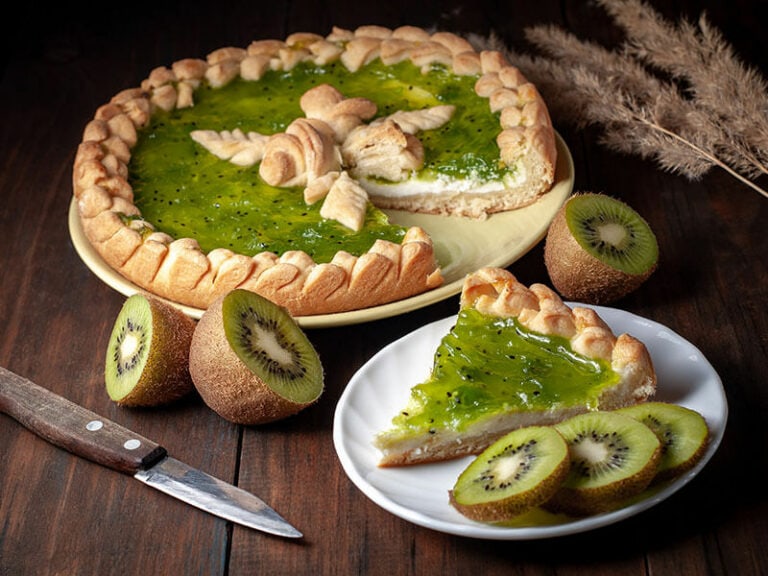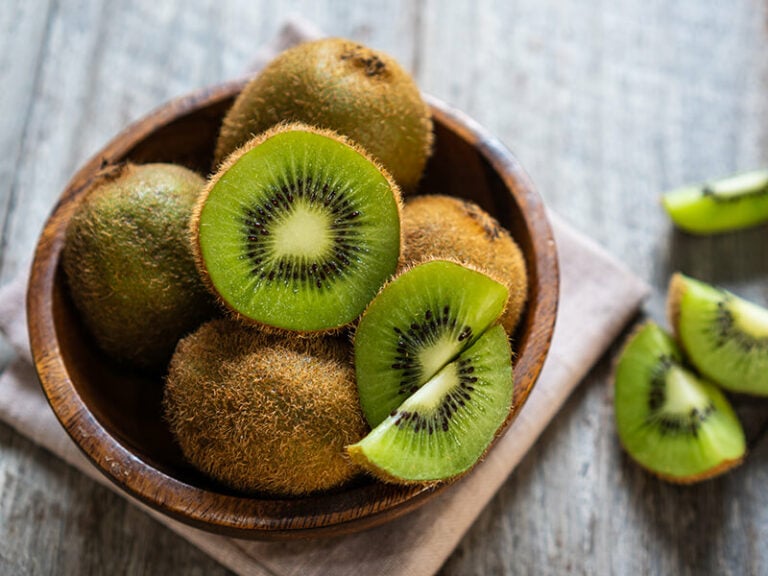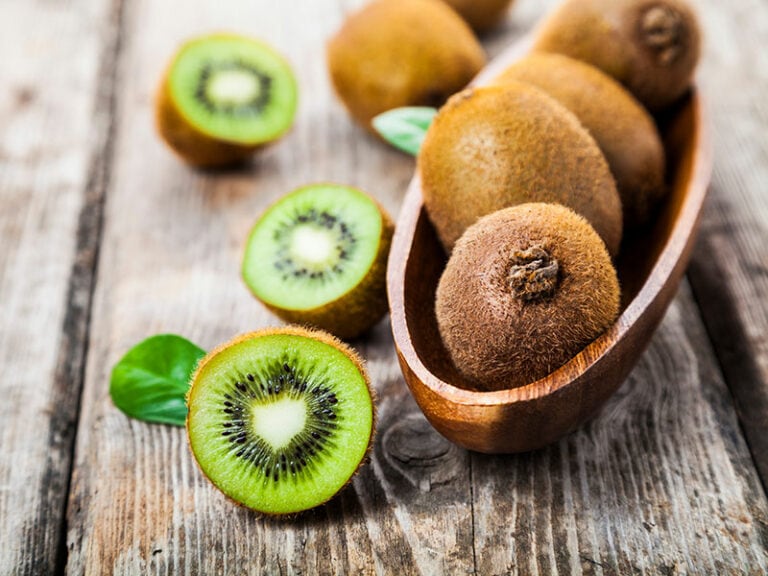“Is kiwi a citrus fruit?” is a question that interests many fruit lovers. A lot of people love sweet and fragrant kiwi fruits. Contrary to their hairy and ruffled appearance, their flesh is very delicious and full of nutrients. They certainly look a lot like citrus fruits.
They have a similar nutritional profile, especially a large amount of vitamin C (typical of citrus fruits). It must make you think that kiwi is one of them. But the answer is more complicated than you think. In this article, let’s all you need to know about this amazing fruit!
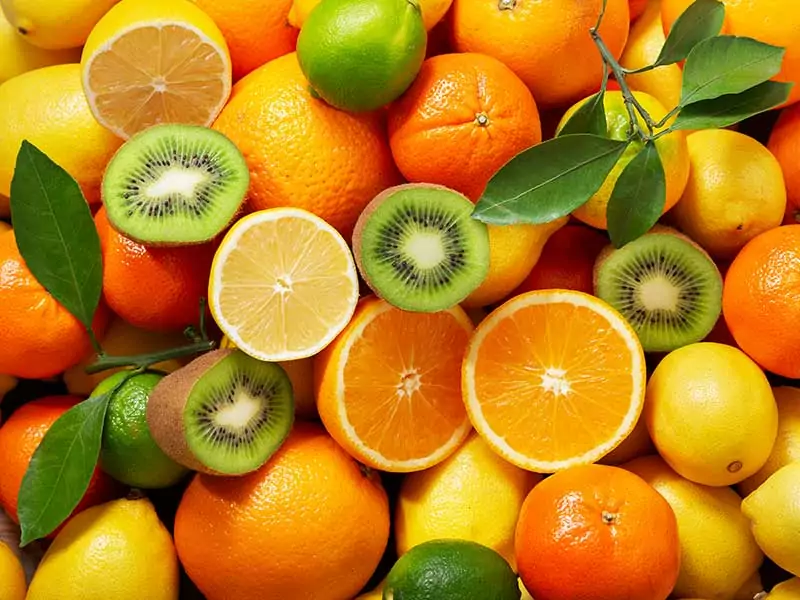
What Are Kiwis Exactly?
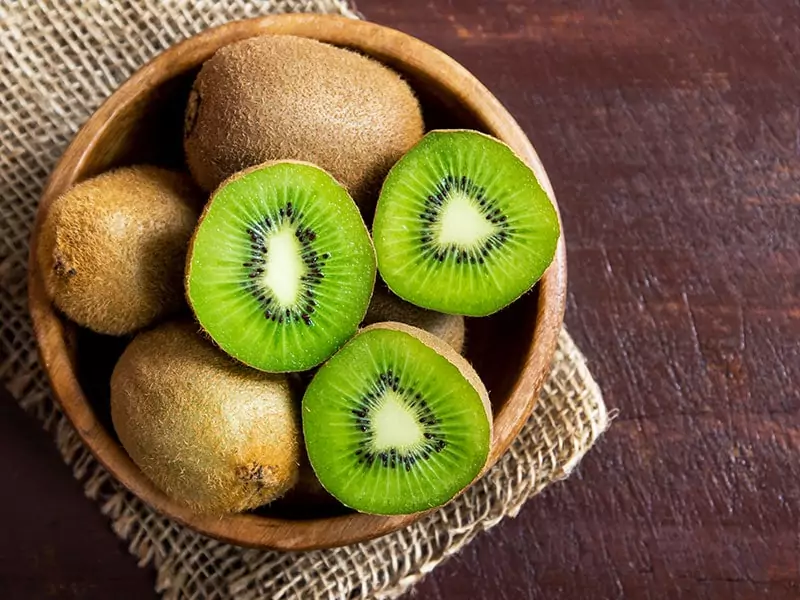
Kiwi is a fruit with a long history that surprisingly started in China. People wrote about it as early as the Song Dynasty (12th century) in Central and Eastern China. In 1904, Isabel Fraser, a New Zealand teacher, brought kiwi seeds from Yichang (China) to New Zealand.
The fruit soon became popular in the country under the name Chinese gooseberries. It was included in the list of goods exported to the US beginning in the 1950s.
But there was a big problem: the Cold War was at its height then, and the Chinese-something name was not suitable for exporting them to the US as the two countries were at odds with each other.
In June 1959, the alternative name kiwi appeared thanks to Jack Turner (1). It came from the national bird of New Zealand. One of the reasons was that the fruit and bird had many similarities in appearance – both were small, brown, and fuzzy.
Kiwi grows mainly in areas with elevations between 800 and 1500 meters. Visually, this fruit is only slightly larger than an egg.
Many people mistakenly think kiwi peel, with light brown skin and a lot of fluff, must be discarded because it is not edible. However, according to many studies, their skin contains many essential nutrients that you can eat.
Inside the unsightly appearance is the succulent flesh. The kiwi flesh is light green to yellow, filled with small black seeds.
With their soft texture and mixed sweet and sour flavors, kiwis are incorporated in many recipes to balance flavors and reduce cravings. Additionally, a ripe kiwi’s delicate aroma mirrors its flavor, which is light and citrusy with a trace of sweetness.
Let’s check out these 7 interesting facts to know about kiwis.
How To Define A Citrus Fruit?
Citrus fruits boast a deeply sour and, sometimes, sweet flavor. They are high in antioxidants, vitamins, and minerals, all of which improve human health.
Citrus is a group of fruits in the family Rutaceae (simply called rue). While these fruits are native to parts of Asia and Australia, they are now widely grown around the world. In the US, you can see this plant in the states of Florida, California, Texas, and Arizona. (2)
From sour to sweet, the nutritional composition of citrus fruits is also more or less different. Their skin is tough and dimpled in texture, bitter in taste, and contains essential oils.
Most citrus fruits, however, are packed with vitamin C, antioxidants, and especially fiber. Popular citrus fruits include oranges, lemons, limes, and grapefruits.
There are countless fruits that are listed as citrus. Let’s discover more useful information about them!
So, Is Kiwi Classified As A Citrus Fruit?
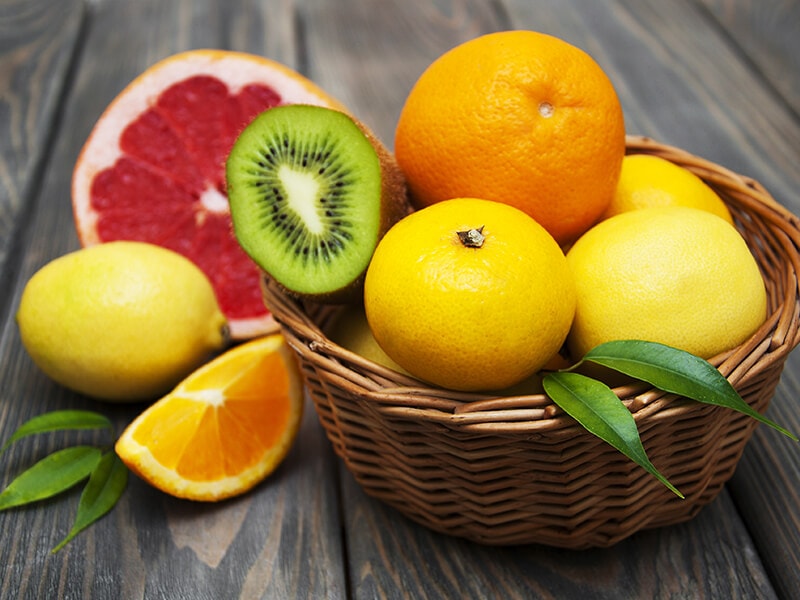
There are certain resemblances between kiwi and citrus fruits, so you cannot help wondering whether they are related. Indeed, based solely on their growing regions, distinct flavor, and nutritional value (mostly vitamin C content), people mistake kiwi for citrus fruits.
However, the right answer to this question is no: Kiwi is not a citrus fruit. They fall under the berry classification, which includes cranberries, tomatoes, bananas, and raspberries. Scroll down to the next sections of this article, in which I will go into detail and show you the truth.
Similarities Between Kiwi And Citrus
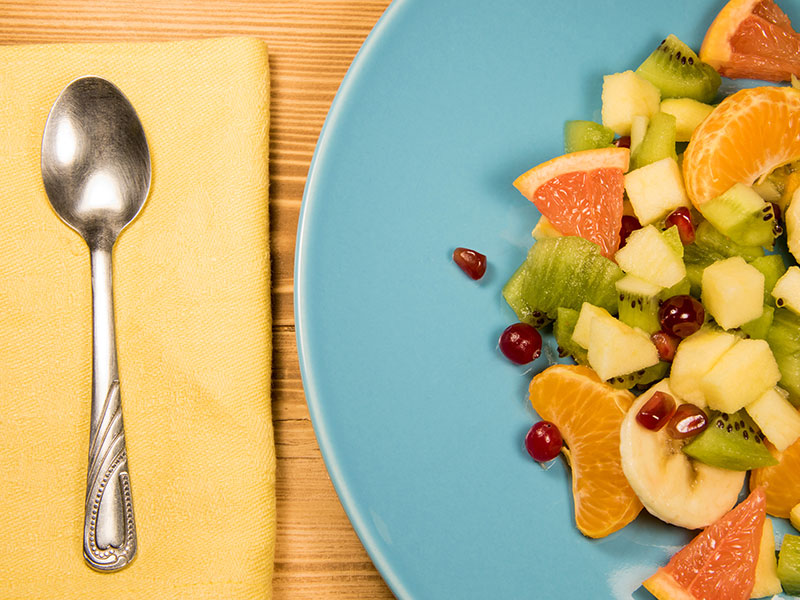
Kiwi is not a citrus fruit although the two have some characteristics in common. First, warm and humid climates are ideal for growing kiwis and citrus fruits. Because of this, China produces a significant amount of these fruits each year.
In addition, kiwi’s tangy flavor is a blend of strawberries, pineapple, and citrus. As such, both types of fruits appear in many recipes and are interchangeable.
Kiwi and citrus fruits are ingredients in muffins, pancakes, and other sweet baked goods. People also make kiwi jams, jellies, salads, and sauces for savory dishes.
Finally, both fruits are excellent sources of vitamins for your body, particularly ascorbic acid (also known as vitamin C). It promotes good skin, supports blood pressure, and strengthens the immune system. (3)
Doctors frequently advise including citrus fruit and kiwis on the menu to enhance health. As a result, it sometimes leads people to misunderstand that they are the same.
Specific Differences That Distinguish Kiwi And Citrus Fruits
If you take a closer look at the plant type, origin, characteristics, or nutritional composition, you will be surprised. Despite having a few minor things in common, kiwi and citrus are fundamentally different.
Have you ever wondered what a kiwi garden looks like? Find out here!
Plant Type
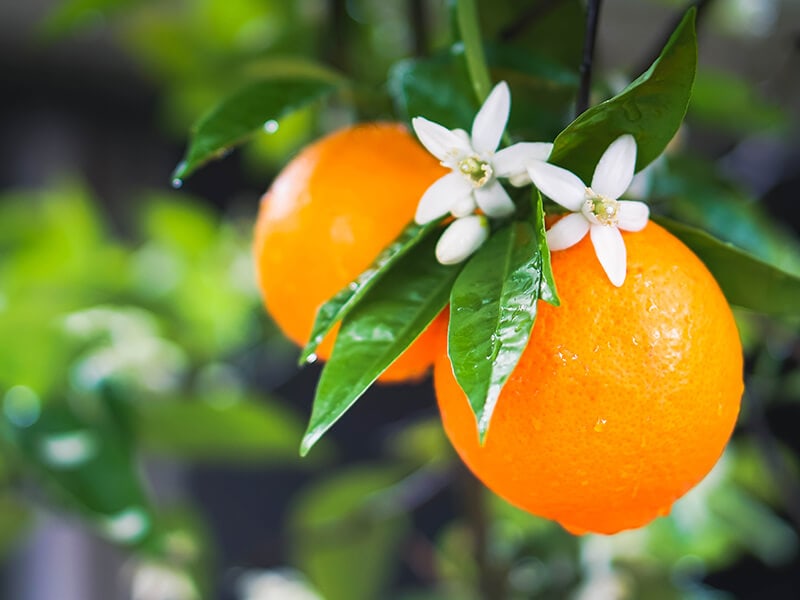
A woody vine, the kiwi (also known as the kiwifruit or Chinese gooseberry), belongs to the Actinidiaceae family. Meanwhile, citrus fruits, like oranges, lemons, and grapefruits, are flowering shrubs that are members of the Rutaceae (rue) family.
Place Of Origin And Growing Area
If the genus Citrus is native to Asian regions (such as East and South Asia), Australia and Melanesia, kiwi is believed to have originated from China and Taiwan.
Kiwis are mostly farmed on a large scale in several countries, such as China, New Zealand, and Italy. Understandably, the global production of kiwi is much less significant than that of citrus fruits.
Meanwhile, citrus fruits are cultivated in over 140 nations, with China, Brazil, the United States, and many Mediterranean countries as the world’s biggest producers.
Characteristics
Although described as having a similar taste and scent, kiwi and citrus fruit are not alike, from the rind outside to the flesh inside.
Kiwi Fruits
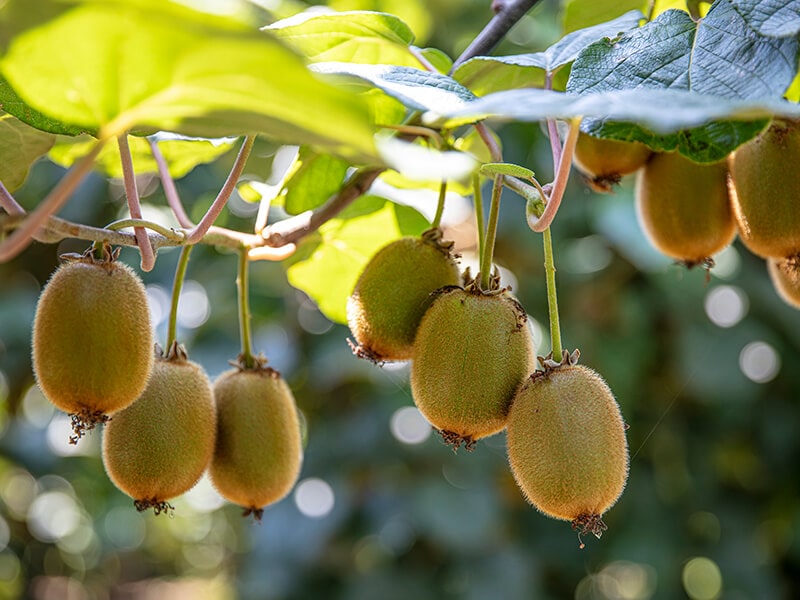
The kiwi is fairly modest (equal to or a bit larger than a hen or duck’s egg). Their thin, hairy, dark brown skin is unattractive and unappealing compared to the flesh inside.
As mentioned above, the kiwi peel is edible. It contains as many nutrients as an apple’s. The taste of kiwi peel is not difficult to enjoy: a slight flavor of kiwi flesh with a mildly bitter aftertaste. Moreover, it does not contain essential oils.
The kiwi fruit’s flesh is typically light yellow to green and contains tiny, edible, black seeds. As they mature, their texture gets softer.
Citrus Fruits
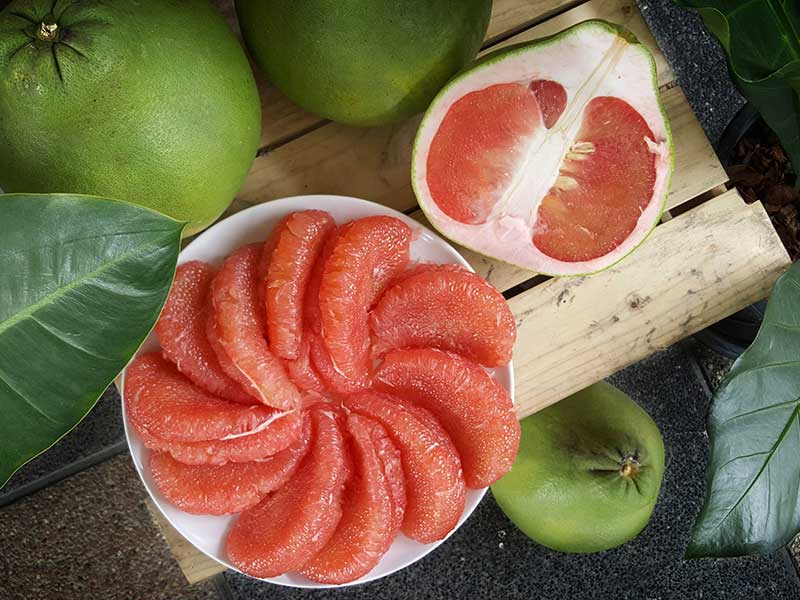
Citrus fruits differ from kiwi in many aspects. They come in a variety of sizes, from enormous pomelos (6–10 inches in diameter) to tiny kumquats (about 1 inch in diameter).
Citrus fruit may be stored longer than kiwi because of their thick rinds, which are more appealing with a light green, yellow, or orange color.
The citrus fruit’s inside is separated into watery pulps. Their seeds are fewer, larger than kiwi, usually ivory white, and edible (but rarely eaten due to their hard and bitter taste).
Many citrus fruits range from exceedingly sour to excessively sweet, unlike kiwis, which have a somewhat sweet and sour flavor combined.
A large amount of bitter essential oil is contained in the peel of the citrus fruit. People usually do not eat their peels but extract them to make medicines or scented candles.
Last but not least, if you suffer from acid reflux, consuming citrus fruits is not a good idea as they all contain high amounts of acid. Instead, you can eat kiwi fruits because they are alkalizing fruits and are safer for you.
Nutrient Values (Amount Of Vitamin C)
Fruits participate in supporting many body functions, in which kiwis and citrus fruits stand out. Both fruits are low in calories but are precious foods packed with nutrients. So what is the difference in their nutritional composition?
The vitamin C content in them is probably the answer. Vitamin C is essential for growth and contributes to cell and tissue repair. It accelerates wound healing, maintains cartilage, and strengthens bones and teeth.
As a powerful antioxidant, this vitamin also helps reduce the rate of cell aging and the risk of diseases such as cancer, arthritis, and heart disease.
Most, when it comes to the king of vitamin C, people immediately think of citrus fruits. 100 g of oranges contain an average of 40-50 mg of vitamin C.
Meanwhile, the same serving of kiwi has 92.7 mg of vitamin C. It means that just consuming 100 g of kiwi provides more than the recommended daily vitamin C intake for an adult person (75 to 90 mg).
Numerous Health Benefits Of Kiwis You Should Know About
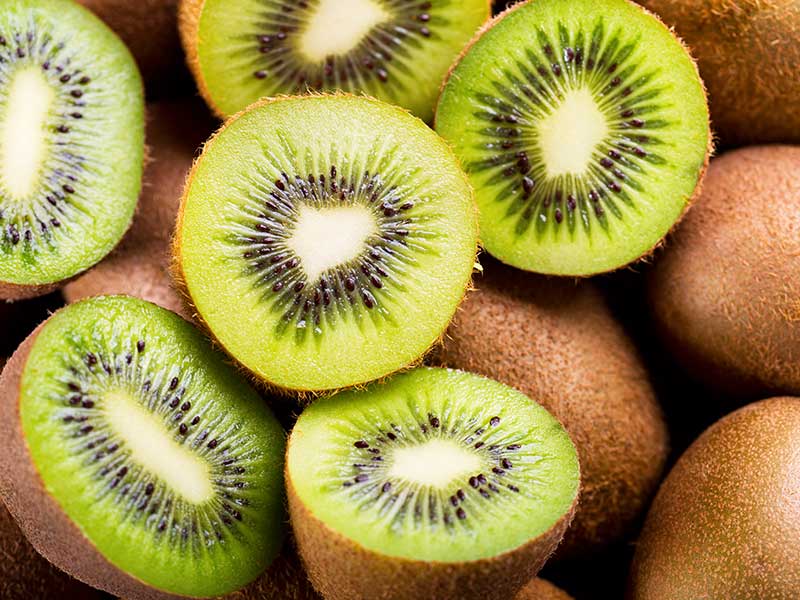
Many people regard the kiwi fruit as a superfood. For one thing, it is high in vitamins such as vitamins C, K, and E and other nutrients like folate, antioxidants, fiber, and potassium.
As mentioned above, an abundant amount of vitamin C helps to boost the immune system, speed up wound healing rates, and reduce symptoms of seasonal illnesses such as the flu, cough, or cold.
Vitamin E has the ability to fight free radicals and prevent the risk of cancer. The serotonin in kiwi helps to optimize the functioning of the digestive system and control appetite for those who want to lose weight.
If you suffer from insomnia, add kiwi to your daily menu. It has the ability to improve sleep quality and give you mental alertness after a good night’s sleep.
Besides being fat-free, the fruit is also rich in fiber and actinidin (an enzyme that increases protein breakdown), which are the perfect combination for a healthy digestive system.
Kiwis And Their Delicious Recipes
Kiwi is used in a variety of dishes, both simple and complex. It not only enhances the dish’s appearance and flavor but also upgrades your foods thanks to its essential nutrients. Take a look at the recipes listed here; perhaps they’ll become your go-to treats.
Kiwi Margarita
Total Time: 5 minutes
This refreshing kiwi margarita can serve as the basis for many homemade recipes. Making this meal is simple and requires no special skills, equipment, or ingredients.
The recommendation given here is to use kiwis that are as ripe as possible. They will naturally sweeten the pungent taste of tequila. To make this cocktail more attractive, try adding salt around the rim of your glass.
Let’s make a refreshing cocktail with some slices of ripe kiwi and tequila for a chilling night.
Kiwi Muffins
Total Time: 2 hours 15 minutes
The ideal dessert for afternoon tea is a fluffy and tasty kiwi muffin. Due to the kiwi’s added nutrients, it is a healthy snack. Add flax seeds to the mix if you want to boost the fiber content. The flavor of the cinnamon powder is another thing that really distinguishes this cake.
Roasted Salmon With Spicy Kiwi Salsa
Total time: 30 minutes
Classic salsa is usually spicy, mildly sour, aromatic, and slightly sweet. Its taste comes from tomatoes, chilies, onions, and coriander. This sauce helps counteract the salmon’s rich and mildly greasy flavor.
What better way to alter it than adding kiwi to the salsa? Its sweet and tangy flavor perfectly complements the overall flavor. Pick nearly ripe kiwis so they will be sweet but not overly mushy when cut.
FAQs
After reading through all the information I provided in detail above, you probably already understand why kiwi is not a citrus fruit. But you may have other questions related to this fruit, so let this section clear the matter for you.
Which One Should You Choose: Kiwi Or Citrus Fruit?
Perhaps you’ve already discovered your answer. A kiwi is not a citrus fruit, and there are dozens of distinctions between the two. However, do not hesitate to add both kiwi and citrus fruits, such as oranges, tangerines, lemons, and grapefruits, to your daily meals.
Each fruit has its own set of advantages. But they will all diversify the flavors of your foods and increase your nutritional intake. You can also cook all kinds of recipes with them.
Please share this post because there may still be many people who are confused about the kiwi and citrus fruit issues. You can also discuss and learn more about this interesting topic in the comment section below.
References
- En.wikipedia.org. 2022. Kiwifruit – Wikipedia.
- usda.gov. 2022. Citrus Trees: Move It AND Lose It.
- Mayo Clinic. 2022. How much vitamin C is too much?.

